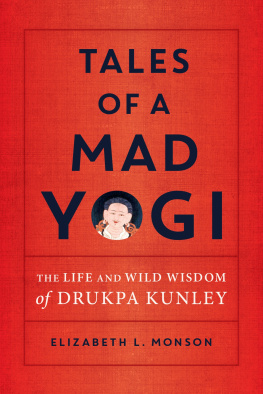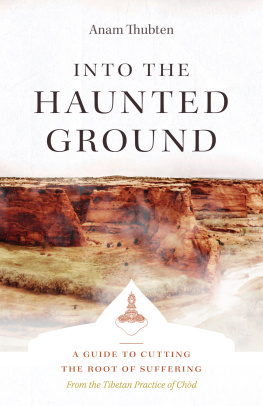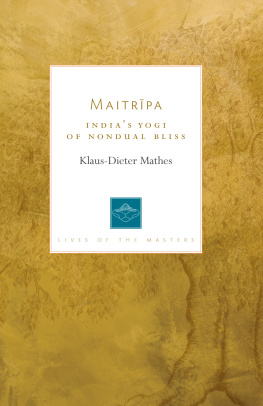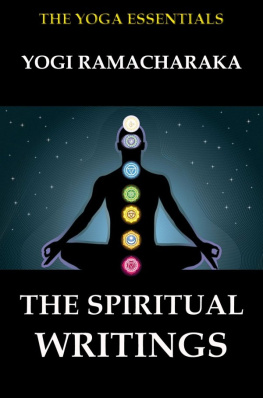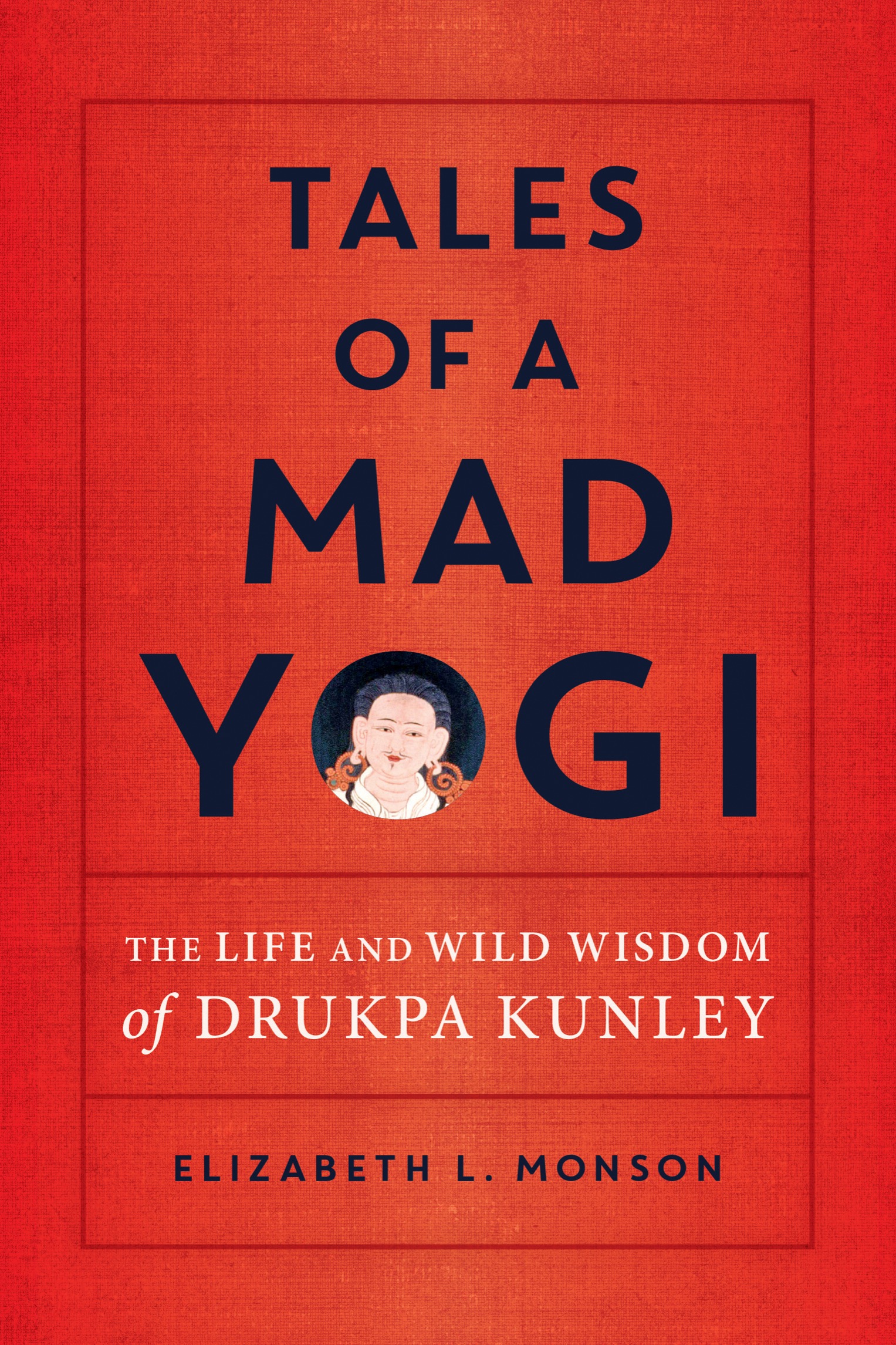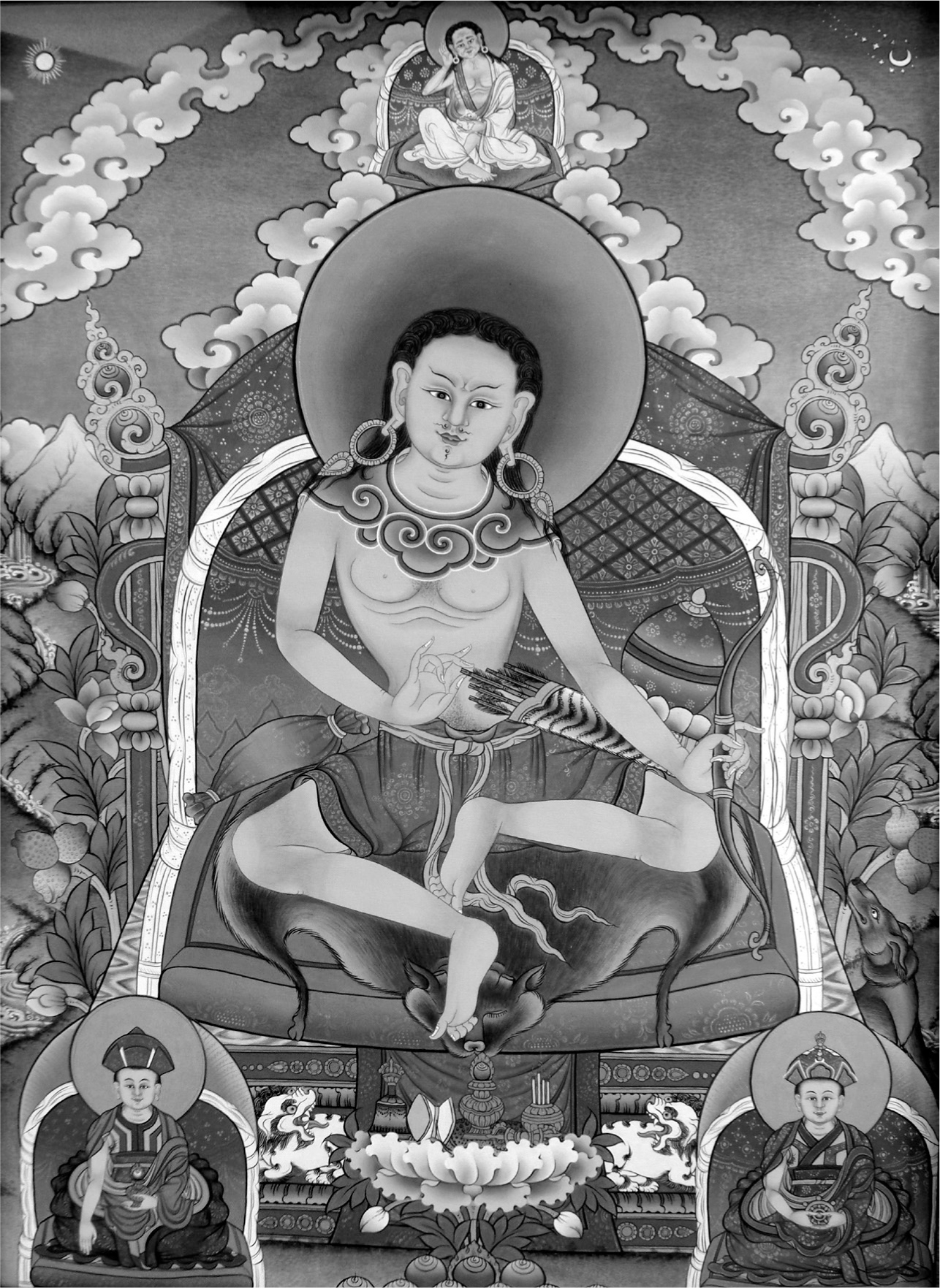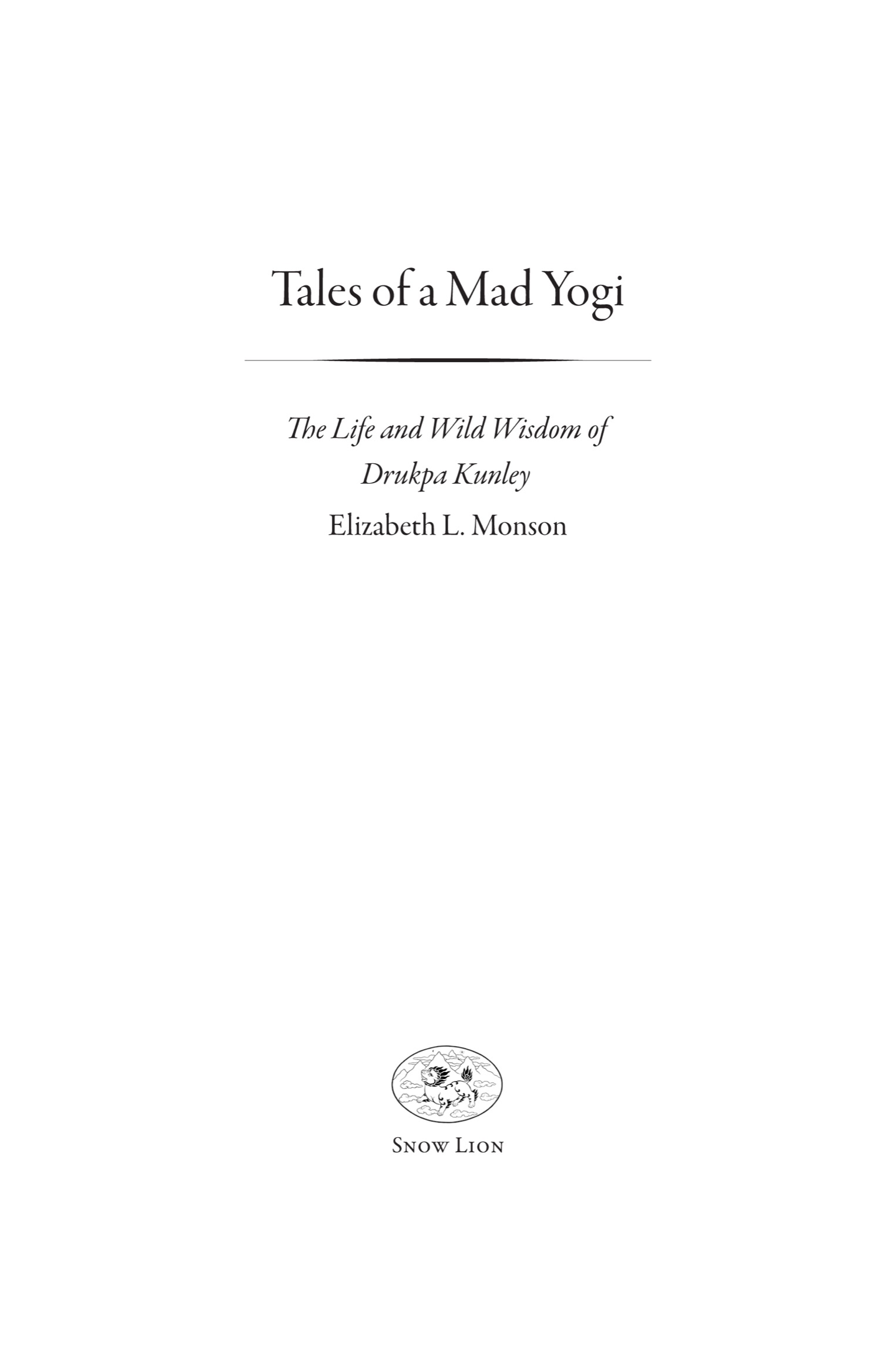Contents
Landmarks
Print Page List
Praise for Tales of a Mad Yogi
Elizabeth Monson gives a most compelling narrative of the Tibetan mad yogi, Drukpa Kunley, revered in Bhutan for piercing through the hypocrisy of society to bring out the essence of the Dharma. The author, herself an academic and Buddhist practitioner, weaves together elegant prose, spiritual insights, folktales, and biographical elements of one of the most fascinating yet elusive religious figures of Tibetan Buddhism.
Franoise Pommaret , senior researcher, CNRS France, and associate professor, CLCS, Royal University of Bhutan
There are few Buddhist saints as lively and humorous as Drukpa Kunley. Drawing on early autobiographical sources as well as the oral tradition, Elizabeth Monsons stunning creative biography captures the irreverent and joyful spirit of Drukpa Kunleys own voice. Written by the Wests foremost scholar on Drukpa Kunley, this book is destined to become a classic.
Elizabeth Monsons creative rendering of Drukpa Kunleys life borrows on a classic of autobiographical literature that is absolutely unique. Shrugging off the trappings of convention, Drukpa Kunley reminds us that the essence of the dharma is a life authentically lived.
Willa Blythe Baker , founder and spiritual codirector of Natural Dharma Fellowship
A literary gemreimagining the elusive Drukpa Kunley, based on exacting research and blended with lucid translations. Elizabeth Monson gives narrative flesh to the bare biographical bones found in his collected writings. The mad saint comes to life, ever the social critic but more human and profound than in the folktales previously available in English.
Holly Gayley , associate professor of Buddhist Studies at the University of Colorado Boulder
Drukpa Kunleys outrageous deeds show us how the ways to teach the Dharma are beyond any conventional limitations. Many of his teachings are given in the form of songs where this great master humorously uncovers layers of subtle hypocrisy that may stain our practice. It is refreshing to have this new telling of his life story, based on his autobiography and folk accounts recorded by the author in Bhutan.
Gerardo Abboud , author of The Royal Seal of Mahamudra: A Guidebook for the Realization of Coemergence
Snow Lion
An imprint of Shambhala Publications, Inc.
2129 13th Street
Boulder, Colorado 80302
www.shambhala.com
2021 by Elizabeth L. Monson
Frontispiece painting by Phuntsok Dorje
Cover art image of Drukpa Kunley courtesy of Franoise Pommaret
Cover design: Daniel Urban-Brown and Kate Huber-Parker
All rights reserved. No part of this book may be reproduced in any form or by any means, electronic or mechanical, including photocopying, recording, or by any information storage and retrieval system, without permission in writing from the publisher.
First Edition
library of congress cataloging-in-publication data
Names: Monson, Elizabeth L., author.
Title: Tales of a mad yogi: the life and wild wisdom of Drukpa Kunley / Elizabeth L. Monson.
Description: First edition. | Boulder, Colorado: Snow Lion [2021] | Includes bibliographical references and index.
Identifiers: lccn 2020026451 | isbn 9781611807059 (trade paperback)
eISBN 9780834843738
Subjects: lcsh : Brug-smyon Kun-dga-legs-pa, 14551529. | Brug-pa lamasBhutanBiography. | Brug-pa lamasTibet RegionBiography.
Classification: lcc bq 942. r 87 m 66 2021 | ddc 294.3/923092dc23
lc record available at https://lccn.loc.gov/2020026451
a_prh_5.7.0_c1_r1
Preface
Drukpa Kunley, the crazy yogi of the Drukpa, entered my life through an unfolding of auspicious coincidences. As a graduate student in the study of religion at Harvard University with a focus in Tibetan Buddhism, I was seeking a topic for my dissertation. I had explored and let go of two other possible topics, which were discouraging experiences in that they involved much effort only to end in disappointment. I wanted to engage with a topic that was compelling enough to carry me through the research and dissertation writing process, but I also wanted it to be personally significant and transformative as an encounter with the Buddhist tradition. I wanted the project to be worthwhile for its own sake, to offer something back to the world, and not simply be a means to an endthe completion of the PhD.
Enter Drukpa Kunley. After reading sections of Drukpa Kunleys Collected Works in a Tibetan language class, a colleague of mine was considering working with these texts for her own dissertation. Not long afterward, however, her attention was captured by a different text, and she kindly suggested that I consider working with Drukpa Kunley for my own research. At first, I was lukewarm about the topic, but as I began to read his writings, I felt a shift. The more I read, the more I felt that the narrator modeled a unique perspective, not only on what it means to pursue a spiritual path but also on the nature of liberation or enlightenment. I was hooked, and it began to feel imperative to bring Drukpa Kunleys voice back to life, back into the present age, and to share his view and teachings.
I learned that Drukpa Kunley was one of the patron saints of Bhutan, one of the last Buddhist kingdoms on earth, and through a series of connections the rare opportunity to live and study in Bhutan opened up for me. Shortly thereafter, I moved to Bhutan, where I met my translation partner, scholar-practitioner Lopon Chorten Tsering. Over the course of the next two years, Lopon Chorten and I co-translated the first and longest volume of Drukpa Kunleys writings, The Liberation Tales (described below). Together, we published this translation as a book, More Than a Madman (Thimphu: Kuensel Press, 2014). Whenever I was not translating, I spent countless hours engaged in ethnographic research on the living traditions surrounding Drukpa Kunley, following in his footsteps, traveling through the mountains and valleys of Bhutan, listening to stories of his crazy antics, and interviewing Bhutanese people whose lives represent the continued powerful and vibrant presence of the saint.
Although Bhutan is swiftly transitioning into the twenty-first century, beneath this surface veneer, there is an older, more traditional and earthy way of living in harmony with things as they are that still enlivens the hearts and minds of the older generations of Bhutanese. In speaking about the importance of Drukpa Kunley in their lives, these elders reminded me that the teachings of this crazy saint penetrate our consciousness on multiple levels. On the surface, people are moved to laughter at his outrageousness and daring; beneath, they are awoken to an experience of a vast mind, mind beyond thought, beyond ideas and concepts of good and bad. When we read or hear of Drukpa Kunleys life and experience his intense focus on hypocrisy, we may begin to recognize the subtle forms of hypocrisy and self-interest embedded in our own thoughts, speech, and actions, a recognition that can gradually lead us back to embodying a truth that is in harmony with things as they really are.

